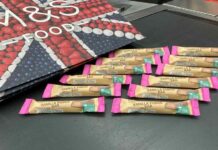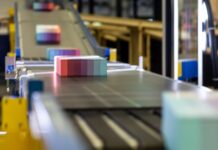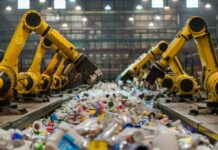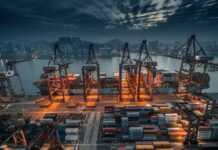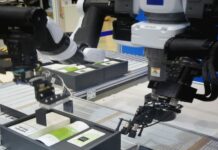Plastic happens to be facing heightened scrutiny from consumers as well as regulators alike. So as to win in packaging, businesses must go on to create a sustainable plastics ecosystem – while at the same time keeping a close eye on costs.
It is well to be noted that brands go on continue to rely on plastic for a range of packaging applications, such as bottles and ready-meal trays, as well as films for fruit and vegetables, due to the material’s unparalleled functional traits and cost-effectiveness. Consumer sentiment is otherwise generally negative when it comes to plastic packaging. As gauged from a recent survey, 82% of people go on to opt for products so as to make use of as little plastic packaging as there can be, while the other three quarters go on to back a ban in terms of single-use plastics1.
It is thereby evident that pressure happens to be mounting, and F&B companies hence go on to face significant disruption within their plastic packaging status quo. Let us highlight a selection of levers that F&B businesses can go on to pull so as to optimize their plastic packaging for the future.
The push to dematerialize
A major tenet of the push so as to optimize plastic packaging has been the endeavor to reduce plastic waste or even dematerialize the F&B firms should they explore a blend of the following two approaches:
Light-weighting
In the last three decades, light-weighting2 practices have gone on to help with material cost savings, with clearly-defined advantages from the perspective of reducing material, production, as well as the transport costs. It is well to be noted that even a few grams from the average plastic bottle or even a container can go on to significantly decrease the level of virgin resin input needed from the fossil feedstocks, hence decreasing the system emissions. For instance, the benchmarking goes on to indicate that the average weight of one regular 500-ml carbonated soft drink single-use PET bottle across Europe fell 33% right from 2008–2023.
Apparently, light-weighting does, in a way, have trade-offs that require being finely balanced. Light-weighting can go on to lessen the after-use value of packaging, which may go on to disincentivize the recycling part. The lighter packaging can also lead to compound leakage problems. In the same way, the emerging trend when it comes to multi-material packaging, so as to counter slowing efficiency gains within single-material formats, goes on to lead to complexities. Identification challenges in waste sorting facilities, as well as incompatibility with the present recycling infrastructure, go on to directly hinder circularity. Hence, navigating light-weighting needs the F&B brands to go ahead and also find an equilibrium when it comes to cost and emissions savings, sans inadvertently eroding the probability in terms of effective post-usage recovery.
Standardizing design in terms of recyclability
Plastic packaging design happens to be the most important driver in terms of recyclability. Looking in the local supermarket, one will quickly happen to find a diverse array of plastic formats as well as materials. This fragmentation goes on to present a significant challenge, as it goes on to directly impede the economies of scale within collection, sorting, along with reprocessing. For example:
• Inconsistencies within the packaging format/ material can go on to cause identification issues.
• Packaging elements like adhesives as well as inks can be incompatible by way of typical cleaning technology.
• Multi-material formats can also be pretty challenging to separate.
• Low volumes of a particular material go ahead and decrease the economic viability of investing within the required capacity.
One potential solution in terms of F&B companies happens to be the agreed guidelines in terms of plastic packaging design as well as materials. An illustrative instance of efforts at standardization can be gauged across the European PET Bottle Platform, which goes on to provide up-to-date standards when it comes to PET bottle design, integrating upgraded research findings and also technological advancements.
A similar sector-led initiative for all plastic packaging would go on to enable economies of scale in post-use processes as well as greater certainty across the recycling value chain over what kind of infrastructure to invest in, hence enhancing sustainability outcomes.
Building partnerships so as to deliver at-scale reprocessing
Even by way of having improved design, circularity will not get improved if recycling as well as the reprocessing capacity in terms of plastics do not go hand in hand. High CAPEX costs as well as insecure access to feedstock happen to act as prominent barriers to entry for new players. Integrated waste management organizations, hence, go on to dominate the space, because of their easy access to supply. The major barriers to expanding capacity are:
- Volatility when it comes to feedstock as well as offtake prices.
- Challenge in securing high-quality feedstock not only by way of enhancing collection but also by limiting exports and downcycling feedstock.
- Policy uncertainty is thereby leading to volume uncertainty with a deposit return scheme, which could raise volumes greatly; however, the execution has lagged behind across a number of European countries.
Hence, finding a middle ground in terms of feedstock value happens to be critical. Low bottle value disincentivizes collection along with recycling, while many high prices go on to create a wide margin between virgin plastics as well as recycled plastics, helping with F&B businesses that are not able to pay for recycled content. By way of further complicating matters, demand for non-food grade plastics, such as those from the textiles industry, often goes on to cannibalize the demand for food-grade reprocessing. A balance needs to be struck so as to ensure the sustained growth as well as success of mechanical reprocessing facilities in terms of food-grade plastics.
One can go on to advocate in terms of collaborative efforts within the F&B companies as well as the mechanical reprocessing industry so as to make the recycling value chain robust and also fostering a substantial investment across the next decade. F&B brands can go on to signal strong as well as growing demand in terms of food-grade plastics by way of establishing long-term offtake agreements. Agreements such as these enable guaranteed cash flows as far as reprocessors are concerned, thereby de-risking the investment as well as lowering the cost of capital. Some of the F&B brands have even gone on to take a step further, by way of directly investing in the development of reprocessing facilities, thereby making sure of guaranteed access to recycled plastic supply. By way of greater demand, certainty will go on to be a key lever for F&B brands in terms of scaling up capacity.
Activating the levers so as to deliver change
The fact is that the plastic packaging ecosystem happens to be in a state of flux. The selection of levers so as to address this underscores three overarching principles which the F&B businesses can go on to embed into their packaging strategy:
• 1 Dematerialize in an intelligent way: Weighing up the trade-offs of shifting materials and formats as well as ensuring strategies so as to reduce plastic usage fully aligns with circular economy principles as well as decarbonization.
• 2 Standardize packaging as well as de-risk investment: Adopting a risk-sharing approach in order to pursue innovation opportunities by way of collaboration as well as investment, such as by agreeing on the standardized design.
• 3 Collaborate with businesses throughout the value chain: Enhancing circularity goes on to hinge on sufficient recycling as well as reprocessing capacity and also the capacity of F&B businesses so as to re-capture the volumes in terms of their own applications. Giving recycling offerors a greater amount of certainty over demand by way of longer-term agreements can as well boost investment so as to expand capacity.






